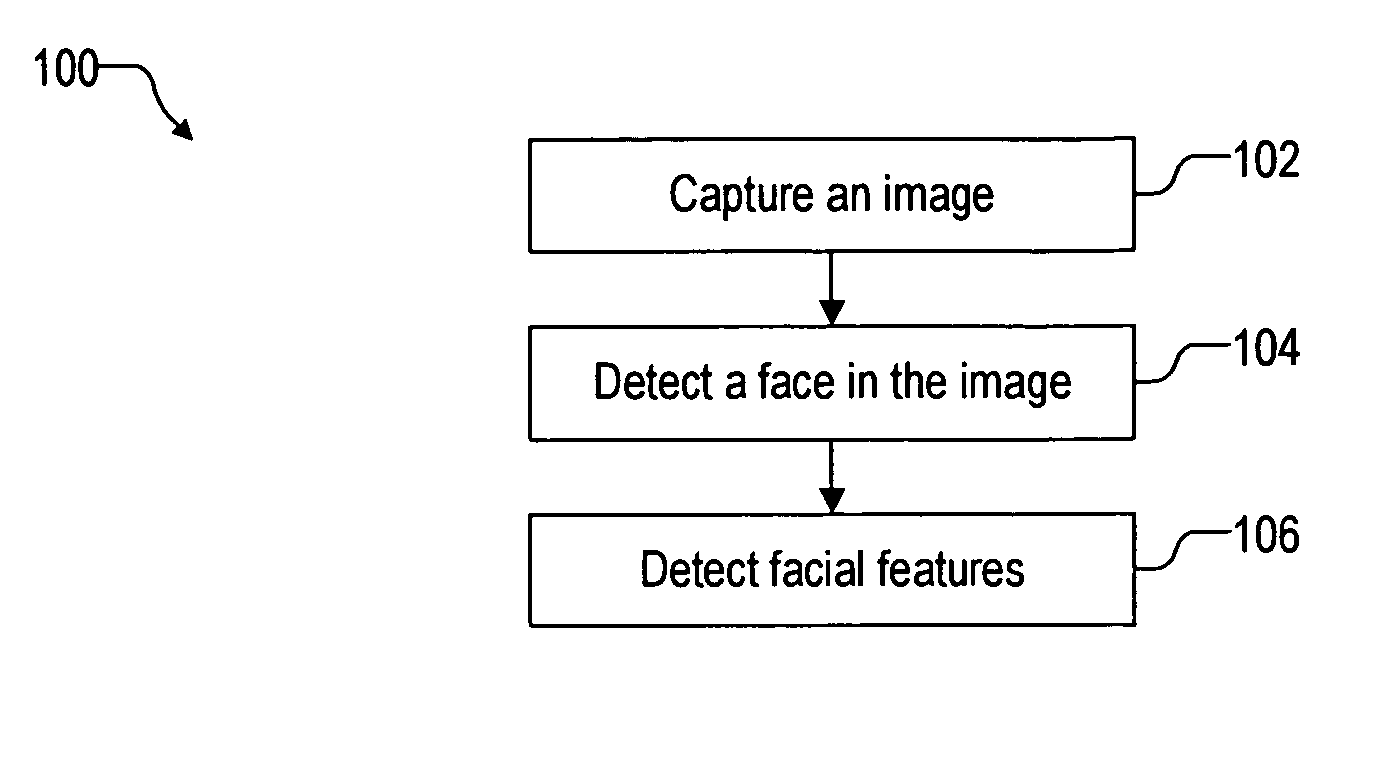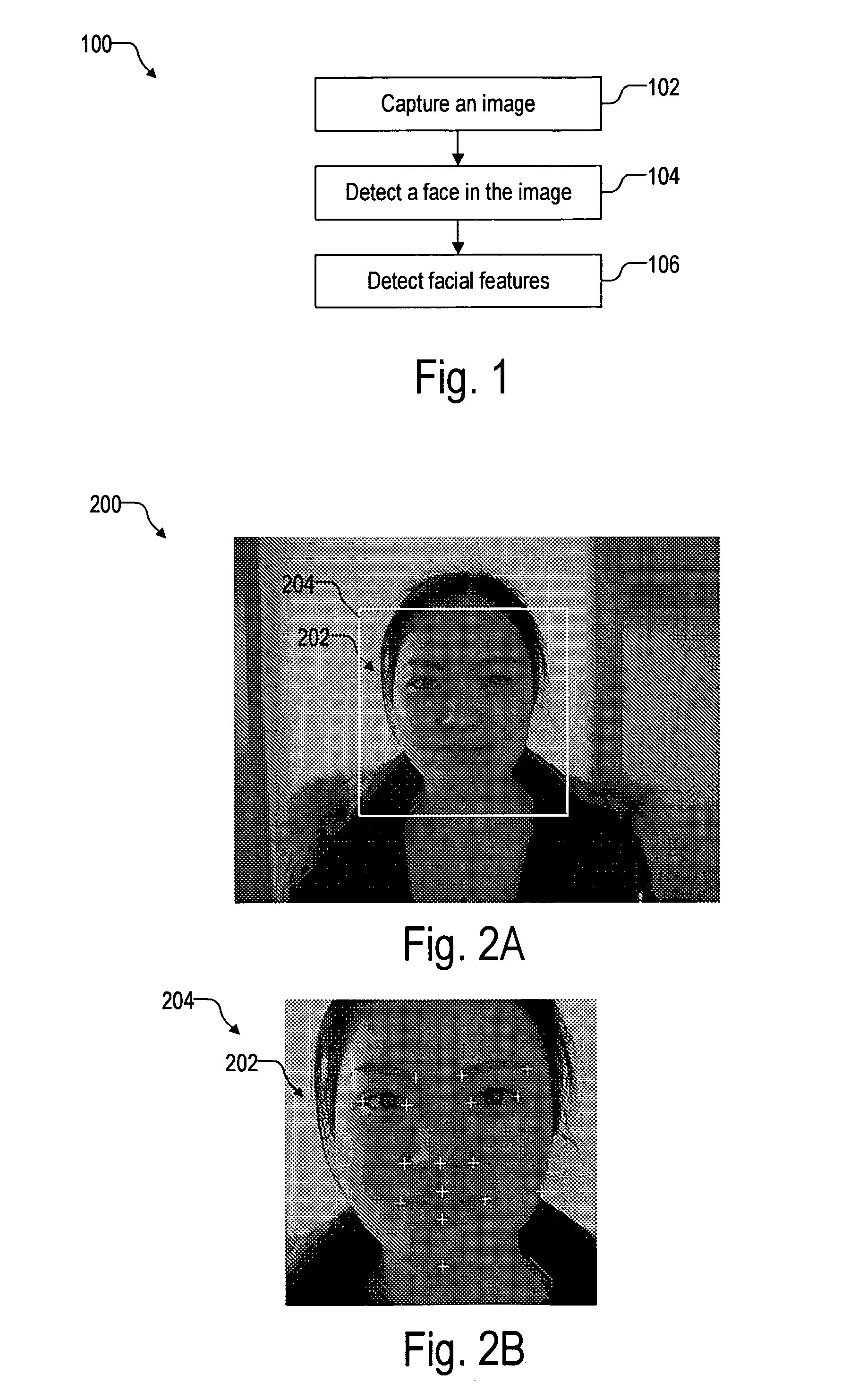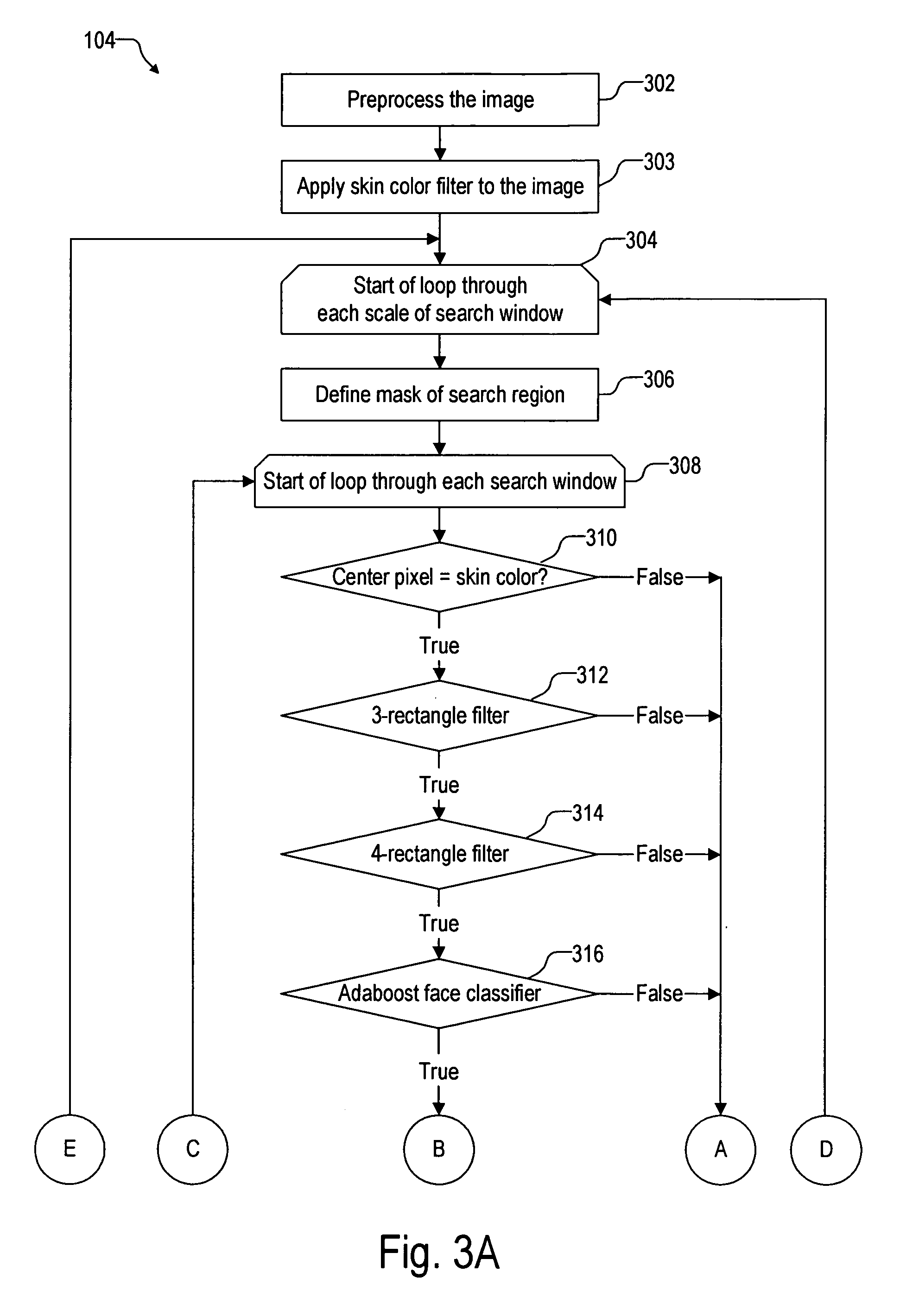Face detection on mobile devices
a mobile device and face detection technology, applied in the field of face detection on mobile devices, can solve the problems of limited memory, more commutations, and difficulty in applying these techniques to embedded platforms on mobile or handheld devices
- Summary
- Abstract
- Description
- Claims
- Application Information
AI Technical Summary
Benefits of technology
Problems solved by technology
Method used
Image
Examples
Embodiment Construction
[0047] In accordance with the present invention, the AdaBoost algorithm is combined with filters to accelerate the detection of an area containing a face from an image. These filters include a skin color filter, a 3-rectangle filter, and a 4-rectangle filter. These filters reject negative samples in difference spaces. Specifically, the skin color filter detects skin color in the RGB space, the 3-rectangle filter imposes an intensity inconsistency constraint in the derivative space (e.g., 2nd order), and the 4-rectangle filter detects eye regions in the intensity distribution space.
[0048]FIG. 1 illustrates a method 100 for detecting a facial area and facial features in the facial area from an image in one embodiment of the invention. Method 100 is implemented in embedded platforms in mobile and handheld devices.
[0049] In step 102, the device captures or receives an image with a face (e.g., an image 200 with a face 202 in FIG. 2A). Image 200 is usually in color (e.g., in RGB format)...
PUM
 Login to View More
Login to View More Abstract
Description
Claims
Application Information
 Login to View More
Login to View More - R&D
- Intellectual Property
- Life Sciences
- Materials
- Tech Scout
- Unparalleled Data Quality
- Higher Quality Content
- 60% Fewer Hallucinations
Browse by: Latest US Patents, China's latest patents, Technical Efficacy Thesaurus, Application Domain, Technology Topic, Popular Technical Reports.
© 2025 PatSnap. All rights reserved.Legal|Privacy policy|Modern Slavery Act Transparency Statement|Sitemap|About US| Contact US: help@patsnap.com



